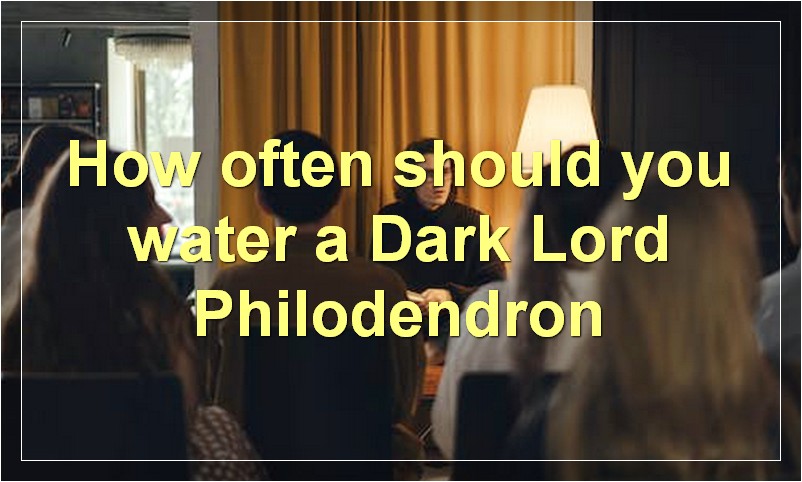Navy blue is a beautiful color that can be created by mixing other colors together. With the right color mixing guide, anyone can create navy blue paint.
What colors do you need to mix to make navy blue paint?
A lot of people think that navy blue is just a darker shade of blue, but it’s actually made by mixing blue and black paint together. The ratio of blue to black paint that you use will determine how light or dark your navy blue paint is.
If you want to make a very dark navy blue, you would use a 1:1 ratio of blue to black. But if you want a lighter navy blue, you would use more blue than black.
Here are some tips on how to mix navy blue paint:
-Start with equal parts of blue and black paint. If you want a darker navy blue, add more black paint. If you want a lighter navy blue, add more blue paint.
-Mix the paints together until you get the desired color.
-If you want a glossy finish, add a bit of clear glaze to the mixture. For a matte finish, don’t add any glaze.
What is the ratio of these colors that you need to mix?

When it comes to mixing colors, there is a lot of trial and error involved. However, there are some helpful guidelines that you can follow in order to get the perfect ratio of colors every time. The first step is to determine what colors you are working with. For example, if you are trying to mix the colors red and blue, you would be working with a primary color and a secondary color. The next step is to decide how light or dark you want your mixed color to be. If you want a very light color, you will need to use more of the lighter color than the darker color. Conversely, if you want a very dark color, you will need to use more of the darker color than the lighter color. Once you have decided on the lightness or darkness of your desired color, you can begin to mix the colors together. It is important to start with small amounts of each color and gradually add more until you achieve the desired shade.
How do you mix the colors together to achieve the desired hue?
In the world of art, there are a limited number of colors available to the artist. The three primary colors are red, yellow, and blue. All other colors are created by mixing these primaries together in different proportions. The amount of each color used will determine the final hue of the mixture.
There are a few basic rules that can be followed when mixing colors. The first rule is that opposites attract. This means that the colors that are opposite each other on the color wheel will create the most vibrant mixtures. For example, mixing red and green will create a very vibrant yellow. The second rule is that similar colors will create more muted hues. For example, mixing red and pink will create a more subdued hue of pink.
The third rule is that light colors will always dominate over dark colors. This means that if you are trying to create a very light hue, you should use more of the lighter color than the darker color. For example, if you want to create a very light pink, you would use more white than you would use red.
Finally, remember that practice makes perfect! The more you mix colors together, the better you will become at predicting what hues will be created.
Is there a certain order that the colors need to be mixed in?
When it comes to mixing colors, there is no wrong or right way to do it. You can mix colors in any order that you like, and there are no hard and fast rules about which colors should be mixed together. However, there are some general guidelines that can help you get started.
The first thing to keep in mind is the color wheel. This is a tool that artists use to help them understand which colors go well together. The color wheel is divided into three main sections: primary colors, secondary colors, and tertiary colors.
Primary colors are the basic colors that cannot be made by mixing other colors together. They are red, yellow, and blue. Secondary colors are made by mixing two primary colors together. They are orange, green, and purple. Tertiary colors are made by mixing a primary color with a secondary color. They are yellow-orange, red-orange, red-purple, blue-purple, blue-green, and yellow-green.
Knowing the color wheel can help you decide which colors to mix together. For example, if you want to create a dark color, you would mix a primary color with its complementary color (the color opposite it on the color wheel). For example, you could mix red with green to create a dark color.
Another thing to keep in mind is the value of each color. Value refers to the lightness or darkness of a color. A color’s value can be affected by how much white or black is mixed into it. For example, adding white to a color will make it lighter in value, while adding black will make it darker.
Value is an important consideration when mixing colors because it can help you create different effects. For example, if you want to create a sense of depth in your painting, you would use light colors in the background and dark colors in the foreground.
Finally, don’t be afraid to experiment! Mixing colors is all about trial and error. The best way to learn is to just dive in and start experimenting. Try different combinations of colors and see what happens. You may be surprised at the results!
What type of paint is best to use for navy blue?
Navy blue is one of the most popular colors to paint a room because it is elegant and classic. The best type of paint to use for navy blue is an eggshell finish because it will not show any imperfections in the paint job. Eggshell finishes are also easy to clean and maintain.
What other colors can be mixed with navy blue to create different shades?

Navy blue is a popular color for both clothing and home decor. It’s a versatile color that can be mixed with other colors to create different shades. Here are some ideas for mixing navy blue with other colors.
For a nautical look, mix navy blue with white. This combination is also perfect for a baby’s room or a beach-themed space.
For a bolder look, mix navy blue with yellow. This combo is great for summertime or any time you want to add a pop of color.
If you want to create a softer look, mix navy blue with pale pink or lavender. This is a pretty combination for a bedroom or bathroom.
You can also mix navy blue with green, gray, or brown to create different shades. These combos are perfect for creating a sophisticated look.
What shade of navy blue do you want to achieve?
Navy blue is a popular color for both men and women, and it can be achieved in a variety of ways. The shade of navy blue that you want to achieve will depend on your personal style and preferences. If you want a darker shade of navy blue, you can achieve this by using a darker blue eyeshadow or eyeliner. For a lighter shade of navy blue, you can use a lighter blue eyeshadow or eyeliner. You can also achieve different shades of navy blue by using different colors of eyeshadow or eyeliner. For example, you can use a dark blue eyeshadow with a light blue eyeliner to achieve a darker shade of navy blue. Or, you can use a light blue eyeshadow with a dark blue eyeliner to achieve a lighter shade of navy blue.
How much paint do you need to make navy blue?
When it comes to painting your home, there are a lot of factors to consider. The color of the paint, the type of paint, the surface you’re painting, and, of course, how much paint you need. It can be a lot to think about, but we’re here to help. In this article, we’ll walk you through everything you need to know about how much paint you need to make navy blue.
Navy blue is a popular color for both interior and exterior painting projects. It’s a classic color that evokes feelings of stability and sophistication. Navy blue also has the benefit of being a fairly versatile color. It can be used in a variety of design styles, from traditional to contemporary.
When it comes to choosing navy blue paint for your project, there are a few things to keep in mind. First, consider the type of paint you want to use. There are a variety of paint types on the market, each with its own set of benefits and drawbacks. Ultimately, the best type of paint for your project will depend on your specific needs and preferences.
Once you’ve decided on the type of paint you want to use, it’s time to start thinking about how much paint you’ll need. This can be tricky to estimate, but there are a few general guidelines you can follow.
First, determine the square footage of the area you’re wanting to paint. To do this, simply measure the length and width of the space you’re working with. Then, multiply those two numbers together to get the square footage.
Next, decide on the paint coverage you need. Paint coverage refers to how much area one gallon of paint will cover. This will vary depending on the type of paint you’re using as well as the manufacturer. Be sure to consult the product label or ask a salesperson for guidance on this.
Once you have these two numbers, you can calculate how much paint you’ll need by dividing the square footage of your project by the paint coverage. This will give you the number of gallons of paint you’ll need to purchase. For example, if you’re painting a space that’s 200 square feet with a paint that has an 80 square foot coverage, you’ll need 2.5 gallons of paint (200 square feet / 80 square feet = 2.5 gallons).
Now that you know how much paint you need, it’s time to start shopping! But before you head to the store, there’s one more thing to keep in mind: primer. Primer is a specialized type of paint that helps prepare surfaces for painting and can improve the final results of your project. In some cases, primer may be required in order for your chosen paint color to achieve optimal results. If you’re unsure whether or not primer is necessary for your project, be sure to ask a salesperson or consult the product label.
With these tips in mind, you’re ready to tackle your painting project like a pro!
What is the drying time for navy blue paint?
Navy blue paint is a beautiful color that can add a regal touch to any room. It’s perfect for bedrooms, living rooms, and even kitchens. But what is the drying time for navy blue paint?
We’ve all been there. You’re eager to get your paint project underway but you don’t want to make a mistake and ruin your work with too much haste. You want the perfect balance of wet and dry time so that your paint job looks flawless.
The good news is that there is no need to agonize over the drying time for navy blue paint! This color dries relatively quickly, in about 1-2 hours. However, it’s always best to consult the specific paint brand you are using for their recommended drying time.
Once your paint is dry, you can enjoy your newly painted room! Navy blue is a stunning color that will make any space look more luxurious.
How do you clean up after painting with navy blue paint?
Navy blue paint is a beautiful color that can add a touch of elegance to any room. However, it can also be a bit tricky to clean up after using it. Here are some tips on how to clean up after painting with navy blue paint:
1. Make sure to wear gloves when you are painting with navy blue paint. This will help to prevent your hands from getting stained.
2. Try to use a drop cloth or tarp when you are painting with navy blue paint. This will help to catch any drips or spills.
3. If you do happen to spill some navy blue paint, try to clean it up immediately. Use a damp cloth to blot at the stain.
4. Once you have finished painting, make sure to wash your hands thoroughly. You may also want to consider using a hand cream or lotion to prevent your hands from drying out.




